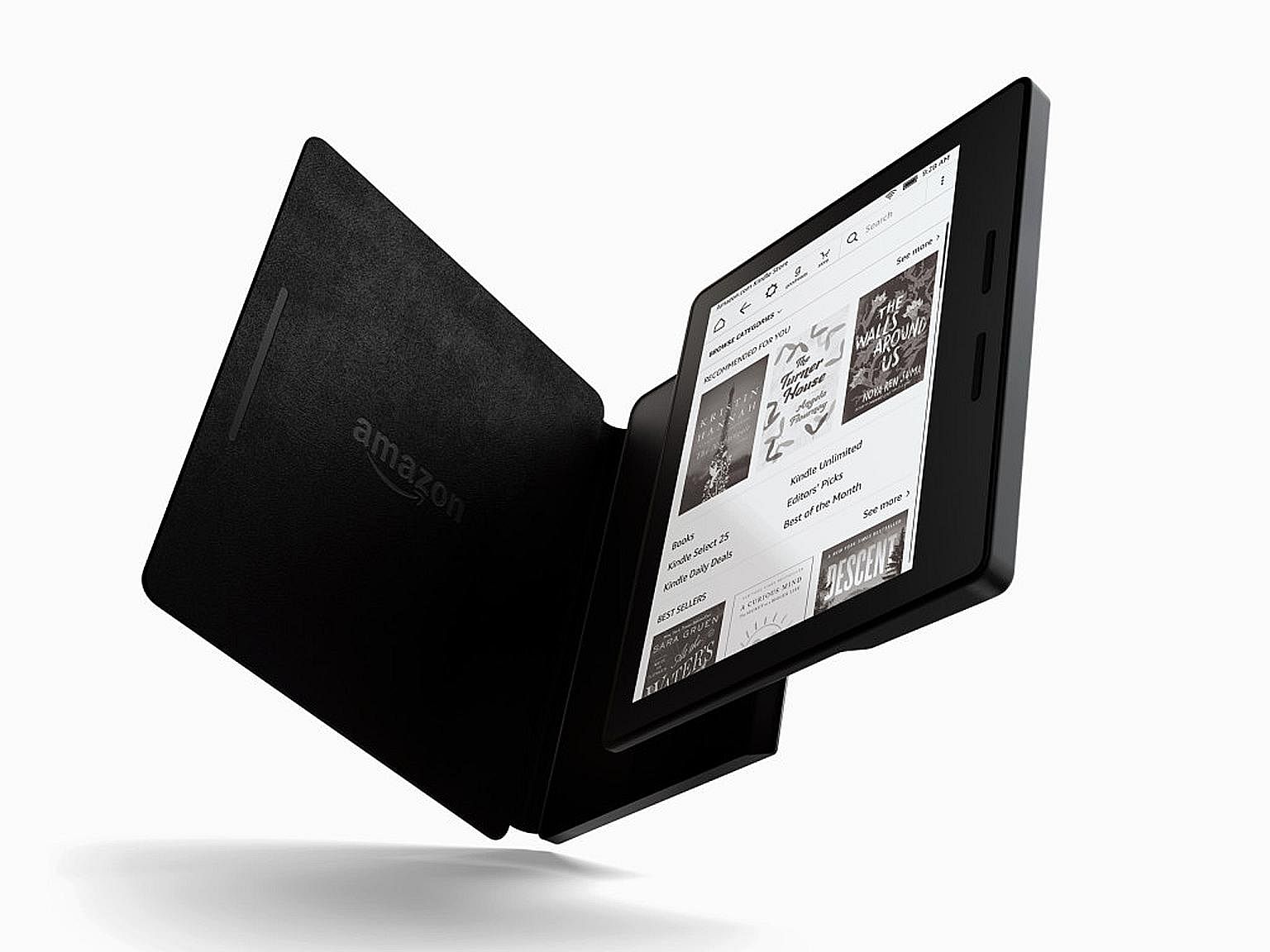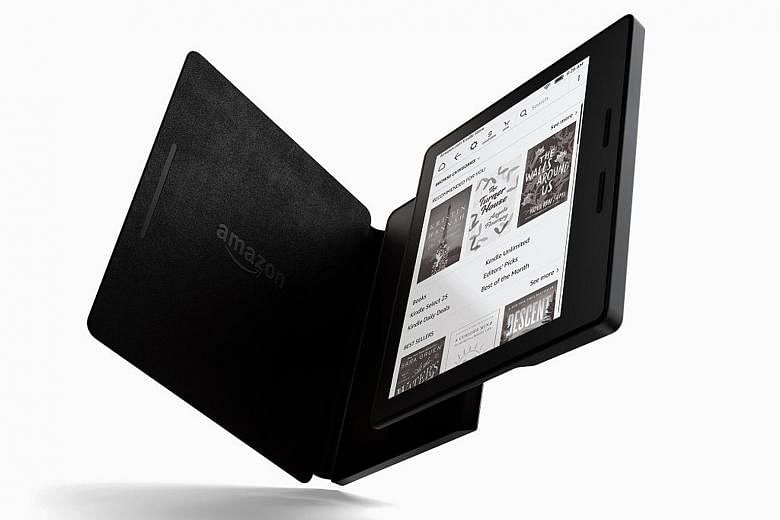I adore reading and one of my favourite things is my slim and small Kindle Paperwhite e-reader, which lets me pack half a library wherever I go.
So when Oasis, Amazon's latest Kindle e-reader, was announced last month, I perked up. My stash of e-readers already include two Amazon Kindles and a Barnes & Noble Nook, but there is always room for an upgrade.
But the Oasis' price of US$289.99 (S$390) - making it the most expensive e-reader in the market - is giving me serious pause. Plus, there is no software upgrade - it uses the same software as older versions of the Kindle that lets you take notes and tap on words for their meaning.
So the price hike gives consumers only an aesthetic overhaul: a slimmer, lighter device, along with longer battery thanks to a complementary leather cover with a built-in battery that comes with the e-reader.
The Oasis also vastly outprices rival top-end models, such as the Kobo Aura H2O (US$179.99) and Nook GlowLight Plus (US$129.99).

It just feels too expensive for its intended purpose, and that Amazon is running the risk of pricing itself out of the market.
It is also a worrying trend for e-book lovers like me, especially when e-reader prices are starting to creep into the price range of tablets.
I bought my first e-book reader, a third-generation Amazon Kindle, in 2010, justifying to myself that I can save money on purchasing books in the long run.
Classic texts in the public domain can be downloaded for free from websites like Project Gutenberg. And contemporary fiction, like George R. R. Martin's A Song of Ice and Fire series, were available as e-books for half the price of print.
But if the cost of entry is too high, people may just give up on e-readers altogether. After all, paying almost $400 for a dedicated reading device makes little sense now when there are apps for tablets and phones that perform the same function.
It would make sense if newer, more expensive e-readers add new and improved features for a better reading experience.
They already offer a reading experience that most closely replicates that of an actual book, thanks to e-ink technology that look and behave like words on a page.
But, as it turns out, the technology seems to have topped out. E-ink is now indistinguishable from printed text, and the difference in sharpness and visibility between top models have become almost indiscernible.
So manufacturers are innovating on the physical form factor of the device - making things slimmer, making them feel better, making them look prettier.
But that cannot come at such a high price, especially when there is no real improvement to the reading experience.
I will have to regretfully give the Oasis a miss, as my trusty two-year old Paperwhite still does the one thing I need it to do: let me keep my reading habit anywhere, anytime - and without breaking the bank.


